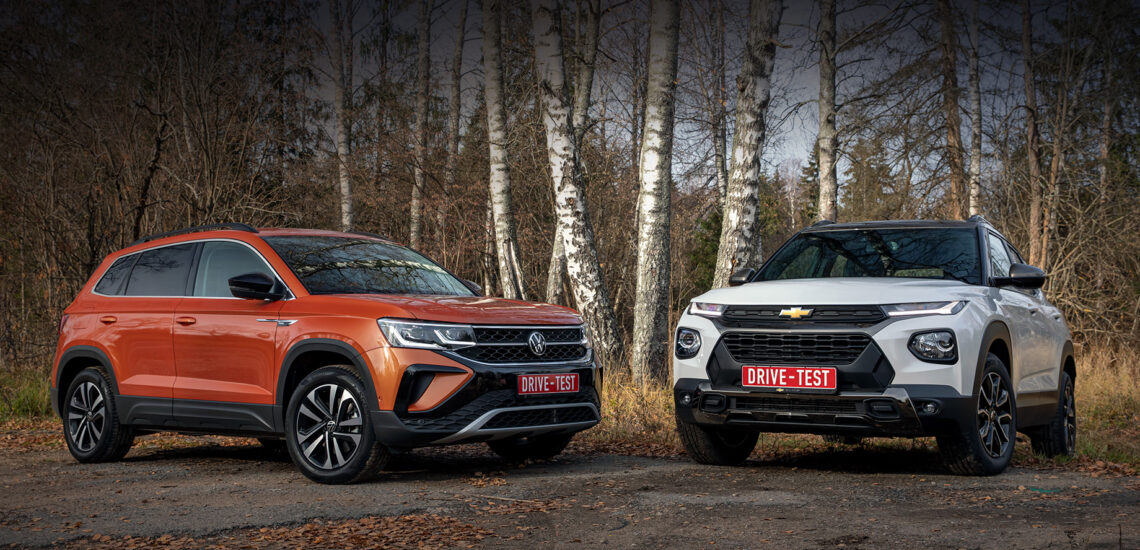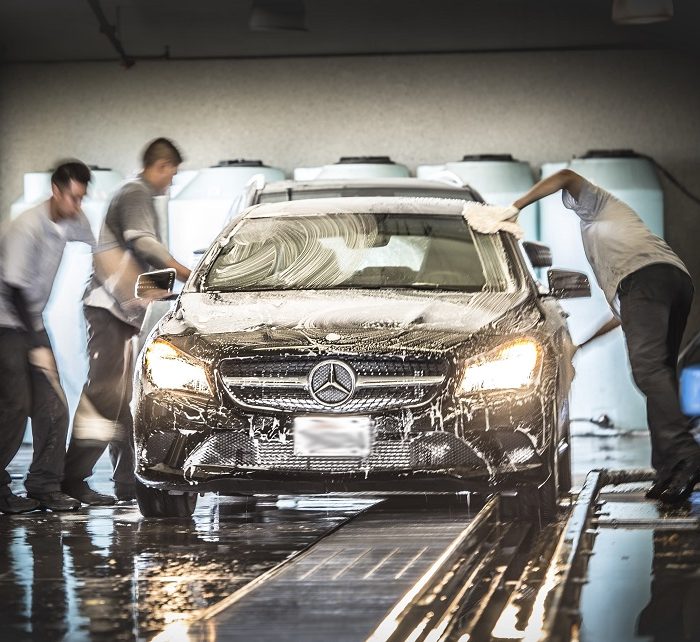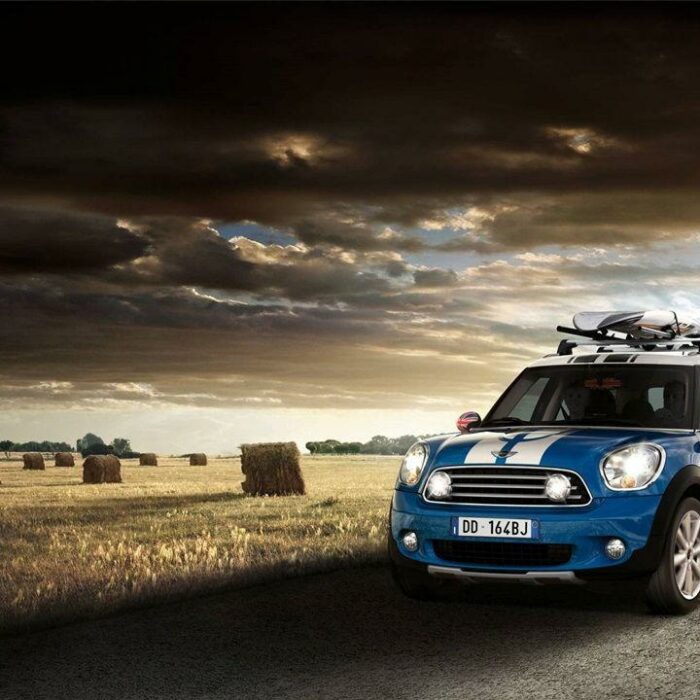Представляємо вам справжніх прямих конкурентів. Ці брати в сегменті кросоверів B+ мають практично однакову довжину кузова і колісну базу. Бензинові турбомотори досягають 150 к.с. кожен. Розглянемо моделі ближче.
Taos більший за Karoq на тій же платформі, але компактніший за Tiguan. Як і споріднені кросовери, виглядає скромно. Помаранчеве забарвлення тіла є його найбільш помітною особливістю. На білому Trailblazer можна затриматися ще довше. Він вищий за Taos, який маскується під рельєфний хетчбек, і виглядає як справжній позашляховик у пластиковому обвісі з протекторами на бампер.
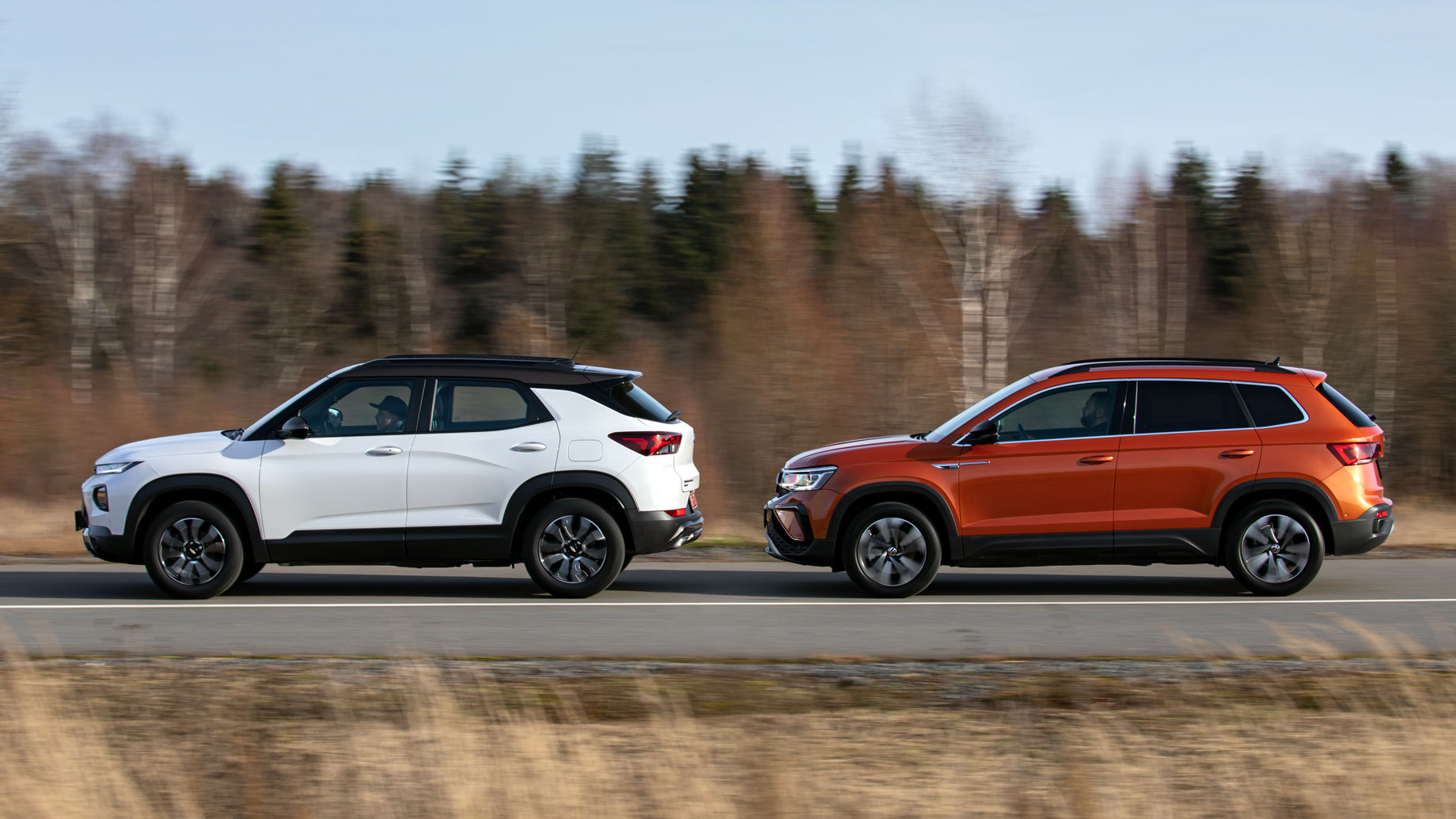
Крім того, його зовнішній вигляд відрізняється в залежності від варіанту конструкції. У нас є варіант псевдопозашляховика Activ, а псевдоспортивний RS можна доповнити красивим синім кузовом Cayman. Навіть якщо відмовитися від контрастного даху, на задніх стійках все одно залишаться чорні вставки. Вони додають елегантності переходу від бічних панелей до рельєфних задніх дверей.
Обидва кросовери мають вузькі пороги, повністю закриті дверима, хоча накладки все одно пропускають бруд під час виїздів на бездоріжжя. Пороги у Taos нижчі, що полегшує посадку в машину. Отвір передніх дверей Chevy вищий і ширший, але деякі водії все одно б’ються головою об передню стійку, сідаючи за кермо.
Що стосується Фольксвагена, то в нього краще сісти на водійське сидіння – є легковий тип крісла. Якщо сидіння опущене, водій зростом 5 футів 11 дюймів не побачить капота, а віконна рейка буде розташована вище, ніж у Chevrolet. Діапазон регулювання керма більший у всіх напрямках. Тож ви можете сидіти далі й потягнутися Ваші ноги ще більше. Над головою багато місця – можна навіть сидіти в циліндрі.
У Trailblazer стеля ближче, але місця в цілому достатньо. Найгірше те, що геометрія сидіння більше зав’язана в регулюванні рульової колонки. Йому не вистачає діапазону вильоту рульової колонки. Тому ви сідаєте ближче до керма, ще більше зігнувши коліна. Прикро, тому що сидіння зміщується в поздовжньому напрямку навіть далі, ніж у Таос.
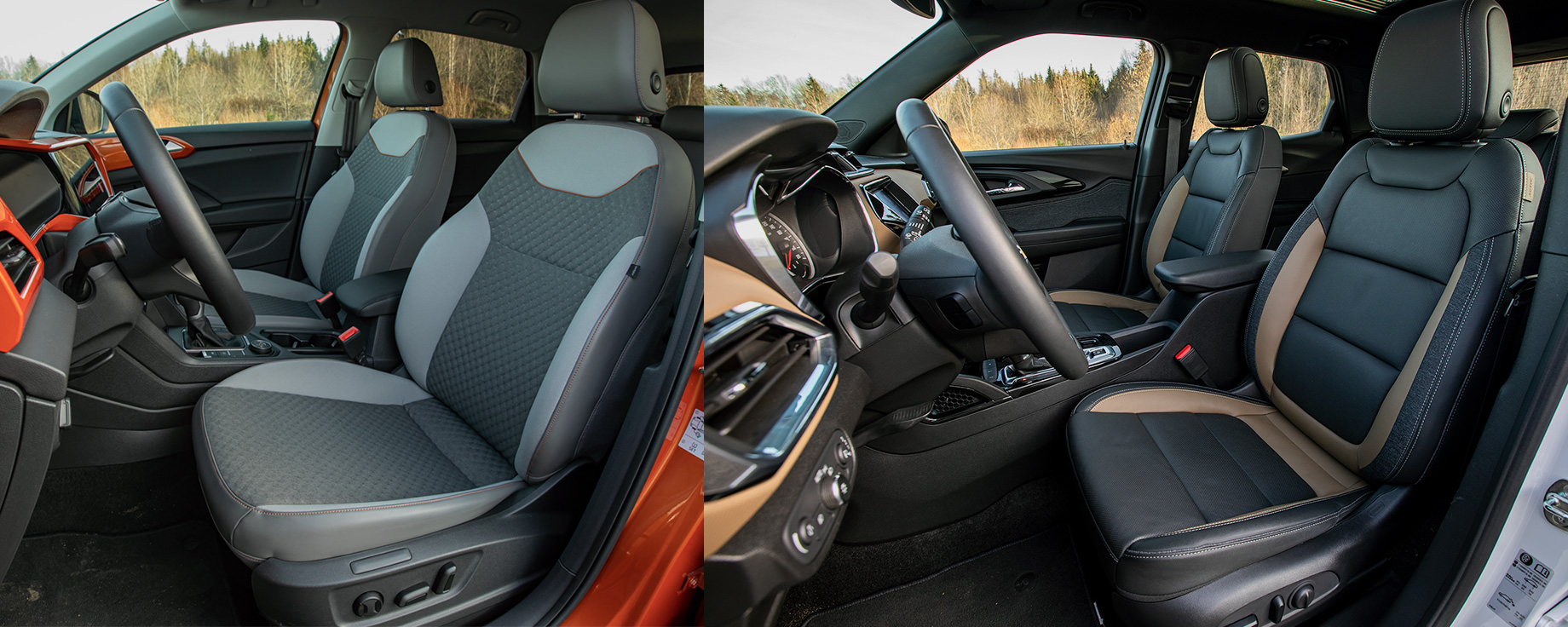
Якщо не ганяти двигун в поворотах, то до сидінь претензій насправді немає. Подушка має достатню довжину; валик спинки оптимально розташований і регулюється в широкому діапазоні, а спинка сидіння ідеально розподіляє тиск. Сидіння Taos, обтягнуте тканиною, м’якше і тому зручніше. Він краще тримає тіло, але гірше підтримує опору в зоні лопаток.
Матеріали оздоблення в компактному Фольксвагені скромні, але салон зібраний якісно і ергономічний. Блок клімат-контролю кнопковий, а не сенсорний, як, наприклад, в Tiguan, і, на відміну від останнього, його центральний підлокітник не заважає користуватися ні коробкою передач, ні тунельними кнопками, ні поворотний селектор приводу. Але тут є деякі нюанси. Коли ви відпускаєте натиснутий важіль керма після одного руху склоочисниками, він повертається назад, щоб перейти до наступного фіксованого положення, увімкнувши інтервальне стирання.
Дизайн інтер’єру Chevrolet цікавіший, але матеріали обрані так собі. Тут така суміш текстур! Тільки чорного пластику існує кілька видів, в тому числі матовий різного ступеня блиску, прогумований і глянсовий з покриттям рояльним лаком. Також є тканинні дверні елементи та м’який коричневий шпон зі строчкою на передній панелі. Справді, матеріали дорожчі, ніж у Фольксвагені, але ця мешанина…
І головною проблемою Trailblazer є нерегульований центральний підлокітник. Він встановлений таким чином, що постійно не дозволяє водієві з легкістю повернути кермо вправо. Під час спуску правий лікоть на 99% врізається в кришку коробки між сидіннями, якщо тільки ви навмисно не притиснете руку до боку. Але їздити так не просто незручно, а часто й небезпечно.
Зір також затьмарюється. За товстими передніми стійками поміститься будь-яка великогабаритна техніка. Задні занадто масивні. Скло вирізали заради стилю – заднім ходом з стоянки важче, ніж у Volkswagen. Тільки бічні дзеркала Taos поступаються в розмірах.
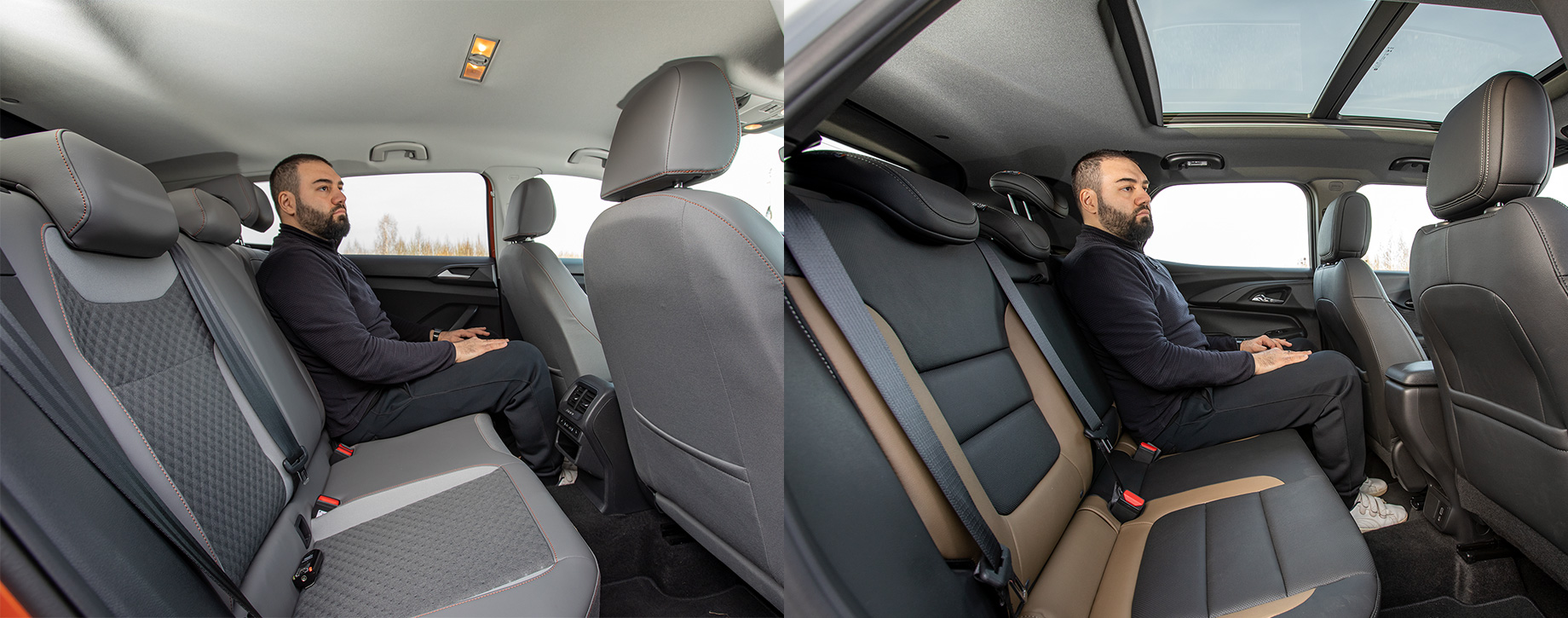
Пасажирам другого ряду більше сподобається сидіти у Volkswagen. Це забезпечує більше простору в зоні колін і над головою, хоча ногам однаково зручно в обох автомобілях. Відстань між стелею та маківкою втричі більше, ніж у Trailblazer. Також тут зручніше встановлювати дитячі крісла, завдяки легкому доступу до кріплень під пластиковими заглушками.
У Chevrolet кронштейни Isofix затискаються між спинкою і подушкою, тому установка дитячого крісла або крісла-бустера займає більше часу. Але в Trailblazer зручніше розмістити дитячу коляску, а також самому зайняти місце на другому ряду. Задні отвори вищі та ширші, тому легше обійти колісну арку. Бути третім пасажиром тут теж зручніше: незважаючи на те, що салон трохи вужчий, тунель нижчий, і ніщо не заважає поставити на нього ноги. Масивний бокс між передніми сидіннями Taos не дозволяє цього зробити.
У наших кросоверах немає електромасажера, але трициліндровий турбомотор Trailblazer відмінно виконує цю функцію. Вібрації відчуваються в достатку на сидіннях і кермі. Також помітний шум двигуна. Але це потужно! Безальтернативний двигун Chevrolet видає 236 Н·м від 1600 об/хв до 4000, що непогано для його об’єму. Запас тяги під педаллю газу завжди є – як для їзди по місту, так і за містом.
На літніх шинах і з вимкненим контролем тяги Chevrolet розганяється до 60 за 9,9 секунди з першої спроби. Чудово – виробник обіцяє 10,5 секунди. Ще кілька стартів і ще 0,1 секунди виграно. Саме лімітні режими найкраще виконуються Trailblazer. Стартує енергійно, потужно наздоганяє майже на всьому діапазоні обертів. Навіть автоматична коробка передач під час прискорення до педалі відкидає повільність, швидко перемикаючи дев’ять тонко постукованих ступенів.
Але одним лише розгоном «в підлогу» потреби покупців не задовольнити. У повсякденному житті крайнощі трапляються рідко. Важливіше, як це – стояти в пробках з Trailblazer або їхати в звичайному режимі. І тут є проблеми. Режими їзди вибирати не можна, а базова настройка силового агрегату занадто різка. Щоб м’яко дозувати тягу в пробках, потрібно занадто заглибитися в процес, відволікаючись від дороги. А поки ви шукаєте підхід до автомобіля, пасажири скаржаться на ривки.
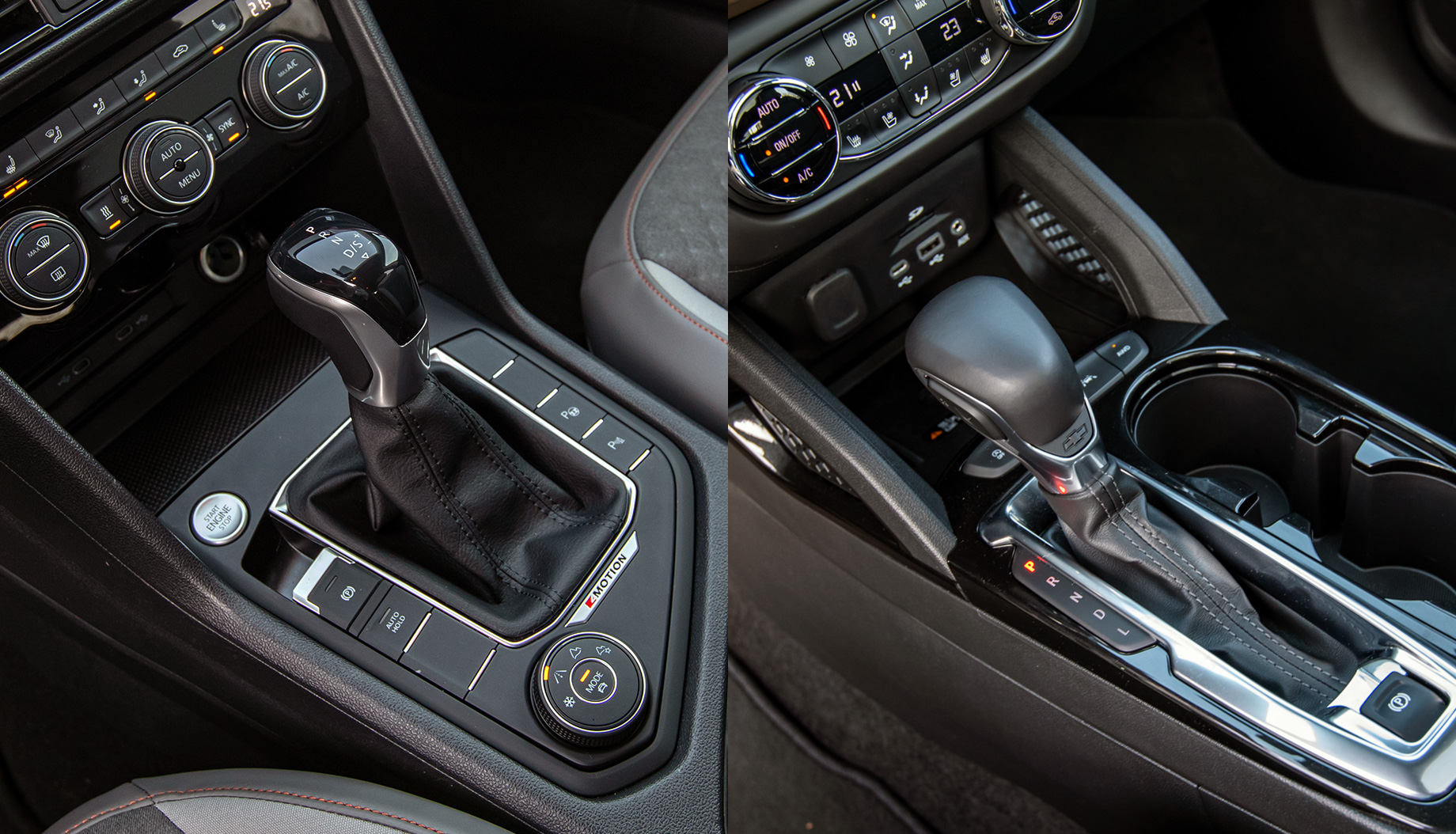
Коли міський трафік зникає, а підключення акселератора вирівнюється, коробка передач стає дивною. Якщо дати йому час подумати, він стає повільним, а зміна діапазонів – погано передбачуваним. У цій же ситуації АКПП може швидко переключитися на одну-дві передачі або продовжити роботу на поточній. Але все однозначно, коли потрібно перемикатися через три, а то й чотири передачі – в тому сенсі, що це завжди займає нестерпно довго. Ми маємо на увазі, що це завжди займає нестерпно багато часу. А коробка GM любить вибирати вищі передачі навіть у місті.
Не втрачає палива і напівавтоматична трансмісія DSG DQ381 від Volkswagen, яка в стандартному режимі перемикається на найвищу сьому передачу до 80 км/год. При цьому на педаль газу Taos реагує максимально байдуже. Нічого не станеться, поки ви не пройдете третину ходу педалі. З такою калібруванням можна їздити тільки в пробках. Там ваша сонливість на користь – подача палива делікатна, розгін плавний.
В інших випадках ми б не переходили на Sport. Таким чином потенціал двигуна 1.4 TSI з 250 Н-м при 1500 об/хв реалізується повністю. Тільки так можна отримати належний тракшн-контроль зі швидкою реакцією на акселератор і своєчасним перемиканням DSG. І тільки так Launch Control може відтворити стандарт сертифіката виробника 8,9 с при розгоні до 100 км/год. Volkswagen також швидше за Trailblazer на старті з рухом ноги на педалі – 10 секунд проти 10,6.
Баланс шасі Volkswagen близький до зразкового. Кермо живе, гальма точні та ефективні, а підвіска легко послужить заготовкою для хот-хетча. Чуйність, зосередженість, грайливість по черзі змушують радіти, як дитина. При цьому німці зберегли хорошу плавність ходу по твердому покриттю. Кросовер байдужий до мікропрофілю дорожнього полотна, без проблем справляється з середніми нерівностями, не напружується на дорозі неакуратними ремонтами. Але краще об’їжджати глибокі ями, щоб уникнути ударів і гальмувати до 12 миль/год перед «лежачими поліцейськими».
Trailblazer гостріше реагує на вибоїни будь-якого розміру і ще більше розгойдує пасажирів з боку в бік. Головне, що його їзда погана. Начебто їдеш по гладкій дорозі, але вібрації в салоні змішуються з сверблячкою від нерівного асфальту. «Гамін» коліс не додає лоску; двигун теж «гукливий». Керованість розчаровує: крен інтенсивніший, а кермо, збентежене фоновою силою, навряд чи можна вважати надійним каналом зв’язку.
Trailblazer частково відновлений на бездоріжжі. Ви можете мчати по розбитій грунтовій дорозі на вищій швидкості, з більшим комфортом і з меншою кількістю ям на кузові автомобіля. Краще працює повнопривідна трансмісія. У нього немає позашляхових режимів. Примусово заблокувати зчеплення тут неможливо, але при діагональній підвісці електроніка швидше передає крутний момент на відповідні колеса. Chevrolet також впевненіше їде по розмитій дорозі в гору.
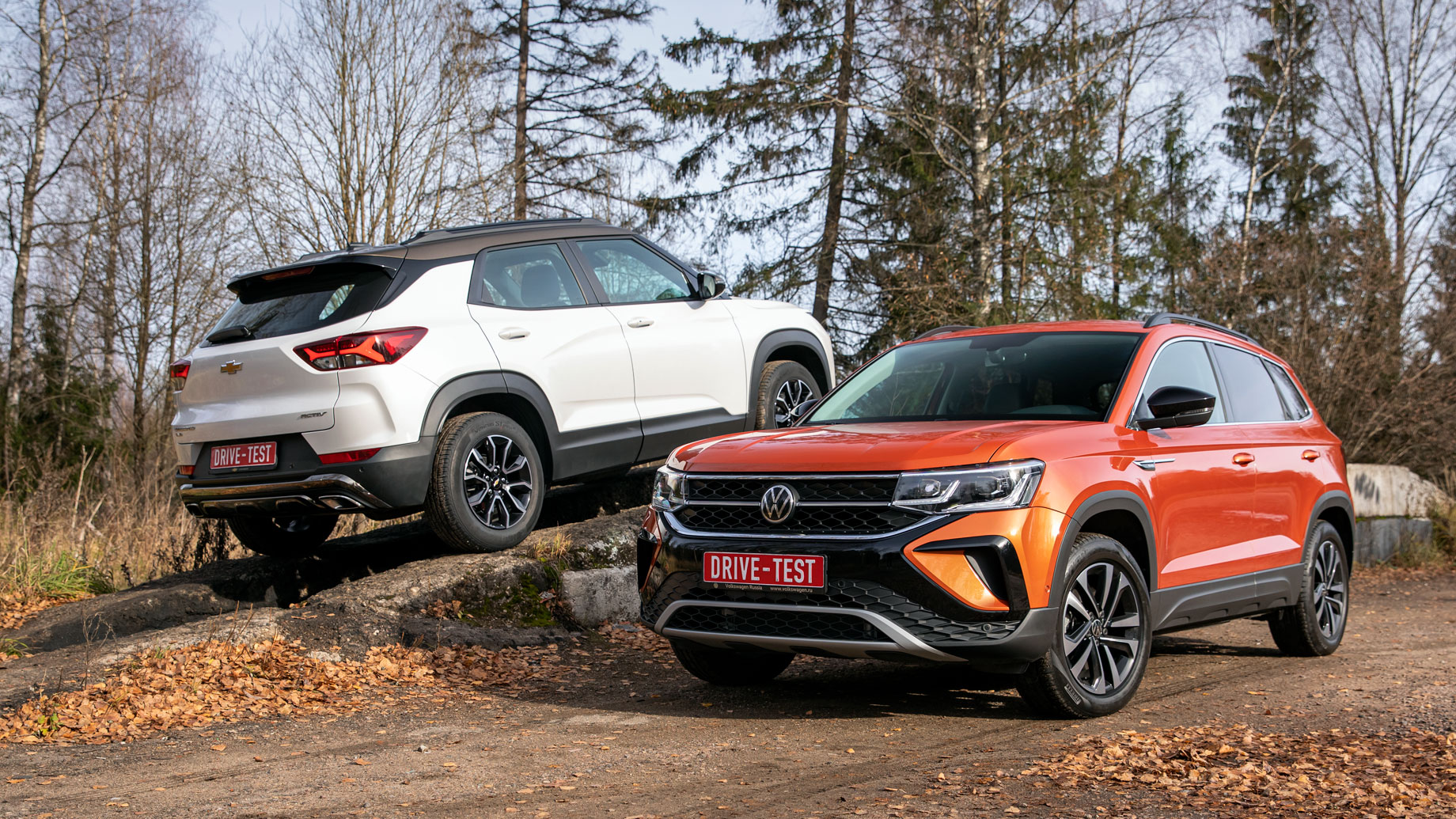
Taos також здатний подолати брудну ділянку дороги, але для відносно плавного подолання потрібно включити режим бездоріжжя. І, як і у випадку з Tiguan з нашого іншого тест-драйву, окрема програма для бездоріжжя дуже допомагає під час осі коліс. Однак епізодичні досягнення не дозволяють забувати про менший на 2 см дорожній просвіт, найгіршу геометричну прохідність і нікчемний комфорт їзди по вибоїстій грунтовій дорозі.
Якщо у вас часті подібні вилазки, то краще вибрати Trailblazer з металевим захистом під силовий агрегат. Або якщо вам більше подобається дизайн Chevrolet. Це теж аргумент. Але в інших випадках кросовер з хрестиком на радіаторній решітці Таосу не до пари. Складається враження, що автомобіль створювався поспіхом: конструктори постаралися, але нехтували тонкими налаштуваннями ходу. Поєднання малобюджетних відчуттів і високої ціни – це хрест Trailblazer.
Volkswagen також не вражає своїми матеріалами обробки. І це теж недешево з його наддувним двигуном, але все одно дешевше з аналогічною комплектацією. Крім того, він швидший, просторіший, зручний для всіх в салоні, однаково уважний до побажань любителів комфорту і шанувальників хорошого керма. Однак Taos буде конкурувати на ринку не з Trailblazer, а з одноплатформенним Karoq. З одного боку, останній дешевший при порівнянних споживчих властивостях. З іншого боку, нагадаємо, що Polo продається краще за Rapid, Tiguan випереджає Kodiaq. Таку ж ситуацію очікуємо і в парі Таос-Карок.
Це переклад. Оригінал можна прочитати тут: https://www.drive.ru/test-drive/chevrolet/volkswagen/61a8f7379bf2ef1fc46f8e5a.html

Опубліковано Березень 17, 2022 • 8хв на читання

